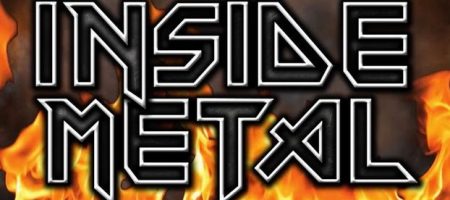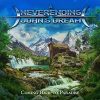Bob Nalbandian on The Rise of L.A. Thrash Metal Part II
Monday, 22nd January 2018
Read Part I HERE.
Dead Rhetoric: As you mentioned, there were a ton of people interviewed for this film, but was there anyone that you wanted to get involved that it just didn’t work out with?
Bob Nalbandian: I was really shooting to interview to interview Kerry King. The timing was really bad, because when we were doing the interviews…in fact, I remember getting the news about Jeff Hanneman’s death. We were in downtown L.A. interviewing Chris Poland. Right after the interview, I got a text from my buddy saying that he had passed away. I was going to the Golden Gods awards that night. Kerry gave a speech there and all. The timing was bad – I didn’t want to hit him up then. I ran into Kerry at NAMM and he said he would be up for it and to talk to their manager and let him know.
Kerry would have been good, but the difference to me and getting the name artist and a no-name artist – it’s great to get the name artists because people want to see them, but a lot of times, the name artists don’t remember it as well. If you look at bands like Slayer or Metallica – Lars has an absolutely fantastic memory, which is unbelievable…but you have to think – these bands do 300 shows a year. Multiply it by 30 years or whatever, and you are asking them to remember one particular night at a particular club. A lot of these guys don’t recall. Even Dave Mustaine – I’m good friends with him and asked him to be in the documentary. He said he’d love to but just didn’t remember. Of course, Mustaine will admit he was a mess in those days. He was complete alcoholic and on drugs and whatever. He said he goes, “I can’t…talk to Ellefson.” That would have been great.
We got Dave Lombardo last minute. After time had passed from Hanneman’s passing I hit up Dave and then shortly after, he was let go from Slayer. I had met with Dave at a club and he said he got the message, but just didn’t want to talk about Slayer at the moment. He had just left the band. I understood. But right towards the end, he said let’s do it. I think he was the very last interview. It was great that we got Dave, because I wanted to get someone from Slayer. The one key thing, as you may know, we got Steven Craig, who was their original manager. He was the guy – he and Kerry King were the brainchild of Slayer when it came to the image and the show, and putting it all together. They used to come to my house all the time, when I had my old fanzine, The Headbanger. We would send out video tapes that they had. It was always Steven and Kerry that had all the ideas. It was so great to get Steven involved. He had kept silent for like 30 years – not talking about Slayer. He said that he’d put a book together one day, which he’s working on. There’s so many books – so many people that I know tried to get Steven, because he was there from the beginning, and he refused them all. But he told me let’s do it – I’m ready to do this.
I think the stories that Steven gives are, for one, very accurate because I was there and I remember. And they are very informative, because a lot of people don’t know that part about Slayer. Kerry rarely talks about the early club days, where Lars loves to talk about those early days. If you listen to interviews of Kerry and Slayer, and it’s almost like they just started from Reign in Blood on – they don’t talk much about the early days. That’s what we wanted to capture. I know Kerry probably wouldn’t have wanted to talk about the early days, but Dave was great. It was great to get him on. Kerry and Dave Mustaine would have been the two that would have been good to have on, and maybe James Hetfield too, to give a separate perspective.
I am glad, that when it comes to Megadeth, that we got both Marty Friedman and Chris Poland to cover those two eras of the band, as well as David Ellefson. I think Megadeth was pretty well covered in the documentary.
Dead Rhetoric: I was reading that you are going to be expanding Inside Metal and covering the Bay Area scene…
Nalbandian: That’s true. We are, in fact, editing that right now. We did all the interviews – we have pretty much drained L.A. dry for the documentaries. I really didn’t want to go past ’86, so I thought we could do Sacramento, and I’m actually living here in the Bay Area now. I’ve lived here for the last year and a half or so. So I’ve been interviewing with my producer here in the Bay Area and my camera guy. We probably did more interviews in this thrash metal title. We interviewed quite an extensive number of artists. Not only thrash – we wanted to cover the whole perspective of the Bay Area scene.
Of course, we got bands from the early days like Y&T, and Testament, Death Angel, Exodus…those kind of bands. But also bands like Vain, Head On, Roadrunner – some of these early ‘80s bands that were very prominent in the L.A. club scene like Anvil Chorus. We wanted to give a full perspective of the Bay Area scene. It’s mainly about the thrash era of the Bay Area, but I like to give the different perspectives. As you may have noticed in this documentary, I have Stryper. It’s so funny – you get comments like, “Dude, Stryper’s not thrash!” It’s like, “Geez, you don’t think I know that?” But the thing about Stryper is that they did a show when they used to be called Roxx Regime before they got into the whole Christian thing, and they were kind of a regular L.A. glam band – fairly heavy, kind of like Ratt back in the day. They did a show with Hirax, when they were called L.A. Kaos, and of course, Metallica. So they shared some great stories about that. They also opened for Raven and Anthrax. They also shared stories about playing a thrash metal festival in Holland with Testament and a bunch of other thrash bands in the ‘80s.
I always think it’s good to get that perspective – the glam bands talking about thrash, and their perspective on the bands, since they played with a lot of these bands. I think it makes it more interesting.
Dead Rhetoric: Would you ever consider expanding the series beyond the California scenes and into other ones as well?
Nalbandian: I would love to. The scene I would most want to do, more than any other scene, and probably my favorite scene…I’ll stand by it – I think it’s the most important scene, if you want to call it that, for the history of metal, is the New Wave of British Heavy Metal. I would love to cover that. Right now, it’s just a matter of finance. We don’t have a huge budget – we don’t have a big travel budget.
When I did the whole entire L.A. series, the three titles – all the bands – I think we did everything in L.A. We took a trip to San Francisco to Metallica HQ and interviewed Lars. We did a couple interviews in Vegas. Then I’ve been up here in the Bay Area, so we didn’t have to do much travelling. But to do something in England, that would be something really cool. But we’ve been talking about expanding it and seeing how it goes. I have a few other separate projects I’m working on as well which are keeping me busy. The thing about doing this – even though it’s not a huge budget, it’s not huge money…I like to make it as complete as possible, and to do it right. That’s how all these movies ended up as two volumes. We had so much material.
It was hard to put everything into one DVD, so we just made it into two each. But that’s my thing – it’s not about the money, it’s about giving the fans the complete history. We will do this on the next movie – the one in San Francisco. It’s looking really good. We’ll see where it takes us. I’m always game.
Dead Rhetoric: I think that the way that heavy metal fans are, opposed to some other styles of music, they savor that kind of approach. You are giving the full picture, opposed to a snippet here or there.
Nalbandian: Yeah – which is exactly what we wanted to do. We wanted to give the full picture. When you go through these VH-1 Behind the Music – those kind of documentaries. You see something on Pantera or Thin Lizzy – they will talk about how they formed and then they just go “The Boys are Back in Town” and skip to five or six albums later. Same with Pantera – they didn’t cover those earlier albums at all, which people well know about.
If we are going to do something, we want to give the complete, true-story. How they started, how they transformed into the sound that they have today. I love doing this on the early ‘80s, because everything was so fresh and thriving. Back then, no one knew what thrash metal was or where it was going. Everything was up in the air. You didn’t know – there were never any big bands. Motorhead was the biggest, heaviest band at the time. Even in America, they were super underground in the ‘80s, but in England they were gigantic.
All these thrash bands, all they ever wanted was to be as big as Motorhead. Nobody ever saw it as being any bigger. They figured they would never be on the radio, they’d never be accepted by the norm. They would just be a great, underground band. That’s what was so cool back then – there were no expectations. No one thought they were going to be rock stars. They just enjoyed what they were doing. The key back then, as I think Steven Craig quotes, “Everyone wanted to be the heaviest and fastest band in the United States.” That was their goal.
Pages: 1 2























